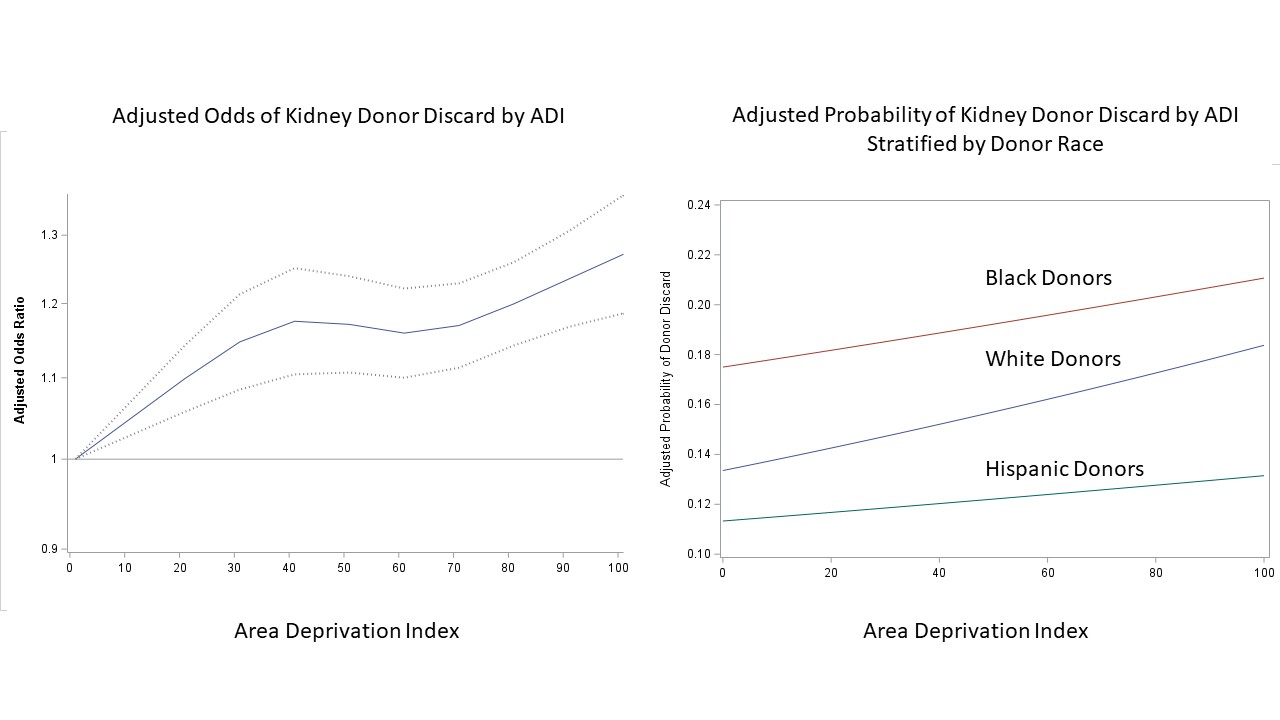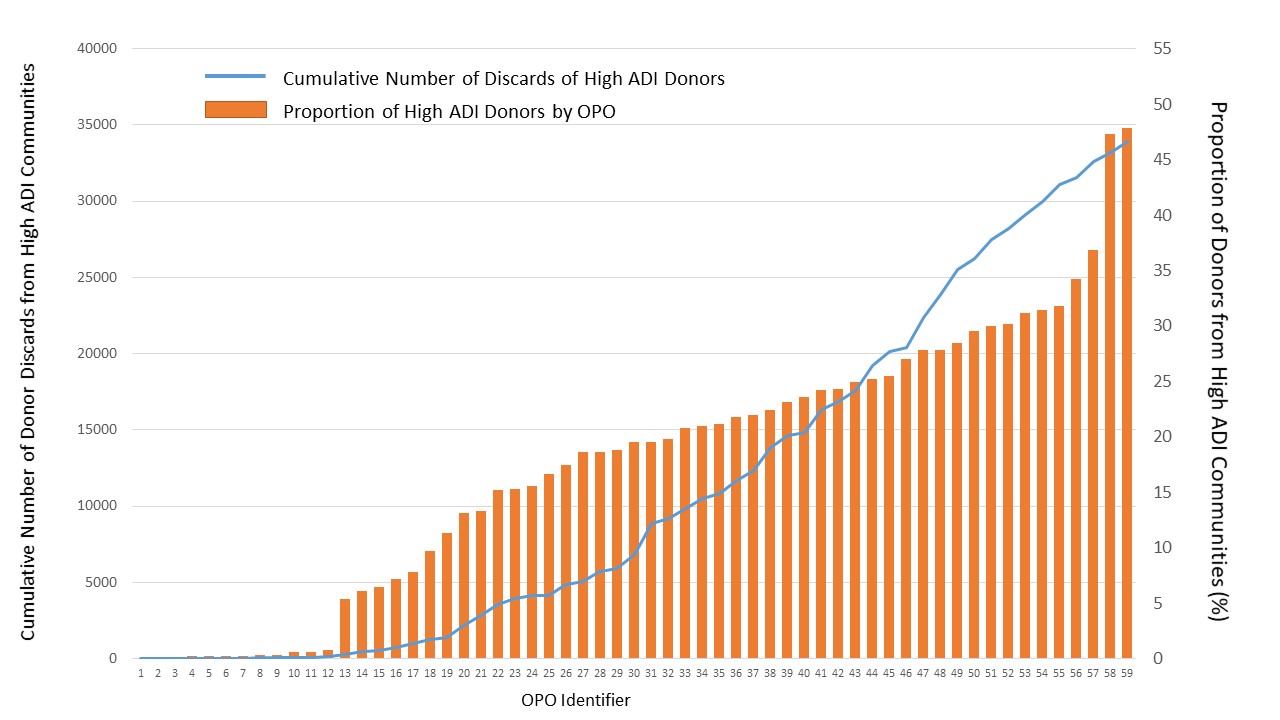Donor Kidneys from Communities with Higher Deprivation Are Significantly More Likely to be Discarded
1Cleveland Clinic, Cleveland, OH, 2Columbia University, New York, NY
Meeting: 2022 American Transplant Congress
Abstract number: 206
Keywords: Donation, High-risk, Kidney, Risk factors
Topic: Clinical Science » Kidney » 32 - Kidney Deceased Donor Selection
Session Information
Session Name: Kidney Deceased Donor Selection I
Session Type: Rapid Fire Oral Abstract
Date: Monday, June 6, 2022
Session Time: 3:30pm-5:00pm
 Presentation Time: 4:50pm-5:00pm
Presentation Time: 4:50pm-5:00pm
Location: Hynes Ballroom C
*Purpose: The proportion of kidneys procured for the purpose of transplantation but ultimately discarded exceeds 20% in the US. Factors associated with deceased donor kidney discard are complex but further understanding of novel sources of discard are critically important to improve outcomes and organ utilization.
*Methods: We used data from the national Scientific Registry of Transplant Recipients from 2010-2021 to evaluate the association of the Area Deprivation Index (ADI) of the residential zip code of deceased donors and likelihood of kidney discard(n=187,823).
*Results: Deceased donors from higher ADI (more deprived) communities were younger, more likely to have a history of hypertension and diabetes, classified as CDC-high risk, have higher terminal creatinine and less likely to be a non-heart beating donor. Mechanisms and circumstances of death varied significantly by ADI. Overall, the proportion of donor discard was 19.2% which increased from 17.0% to 20.8% with worsening ADI. After adjustment for donor factors, the odds ratio of discard in areas of highest deprivation was 1.27(95% C.I. 1.15-1.39, reference=lowest ADI) with a dose response increase in adjusted likelihood of discard and adjusted probability of discard stratified by donor race (Figure 1). There was no difference in the proportion of donor kidneys biopsied by ADI, however among donors biopsied there was a higher proportion of donors with >20% glomerulosclerosis (10.5% vs 8.3% in highest vs. lowest ADI). In addition, high ADI donors (top quintile) were disproportionally represented by Donor Service Area (range 0-48%, median 19%, Figure2).
*Conclusions: Overall, results indicate that increased residential deprivation is significantly associated with donor discard. This association may be explained by underlying risk factors as well as logistical barriers to donation. Variation by OPO may suggest important differences in donor risk that are not currently considered by performance evaluations. Further understanding of reasons for discard may help identify interventions necessary to attenuate rates of discard.
To cite this abstract in AMA style:
Schold J, Huml A, Poggio E, Dewey E, Buchalter R, Husain S, Mohan S. Donor Kidneys from Communities with Higher Deprivation Are Significantly More Likely to be Discarded [abstract]. Am J Transplant. 2022; 22 (suppl 3). https://atcmeetingabstracts.com/abstract/donor-kidneys-from-communities-with-higher-deprivation-are-significantly-more-likely-to-be-discarded/. Accessed December 26, 2025.« Back to 2022 American Transplant Congress


